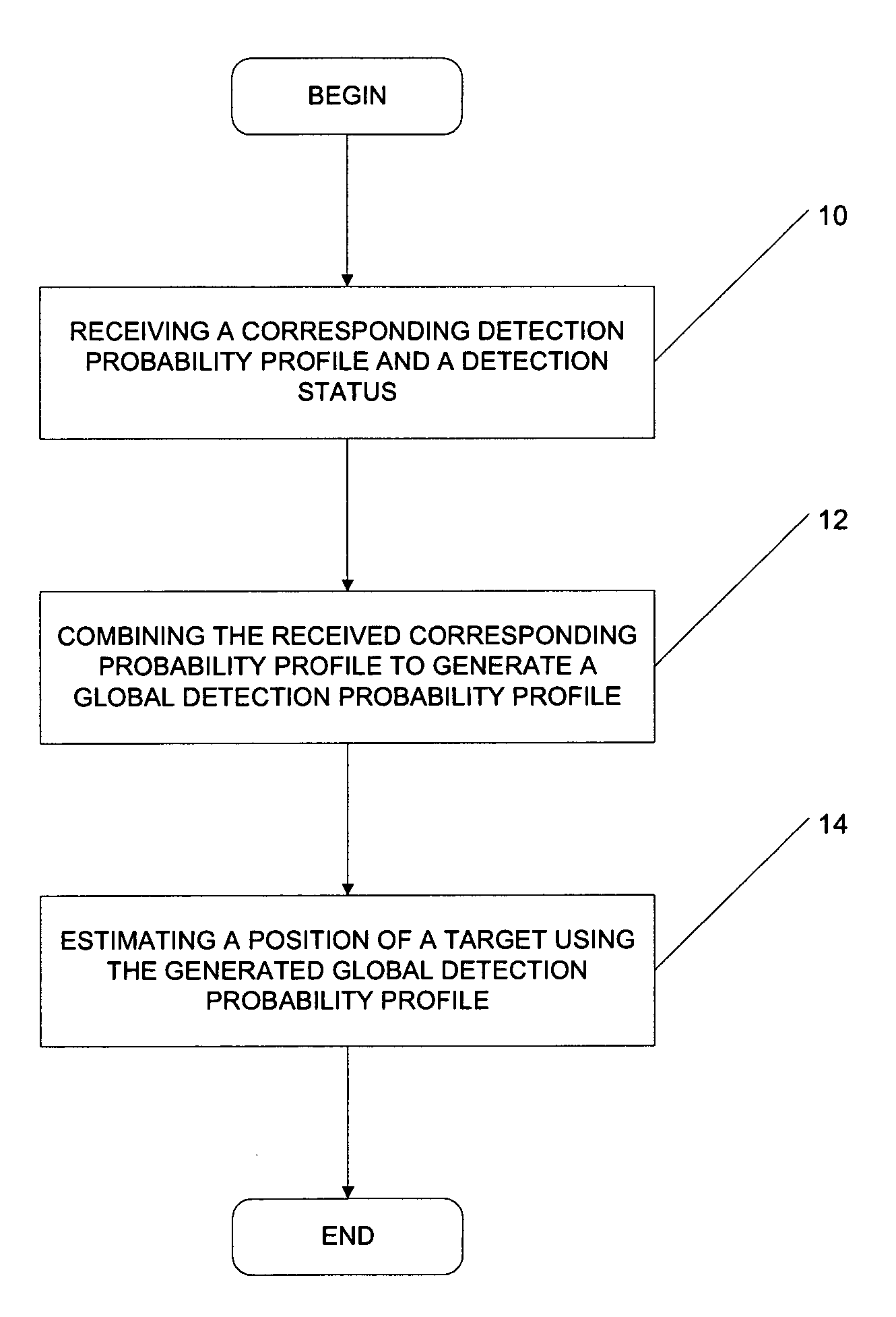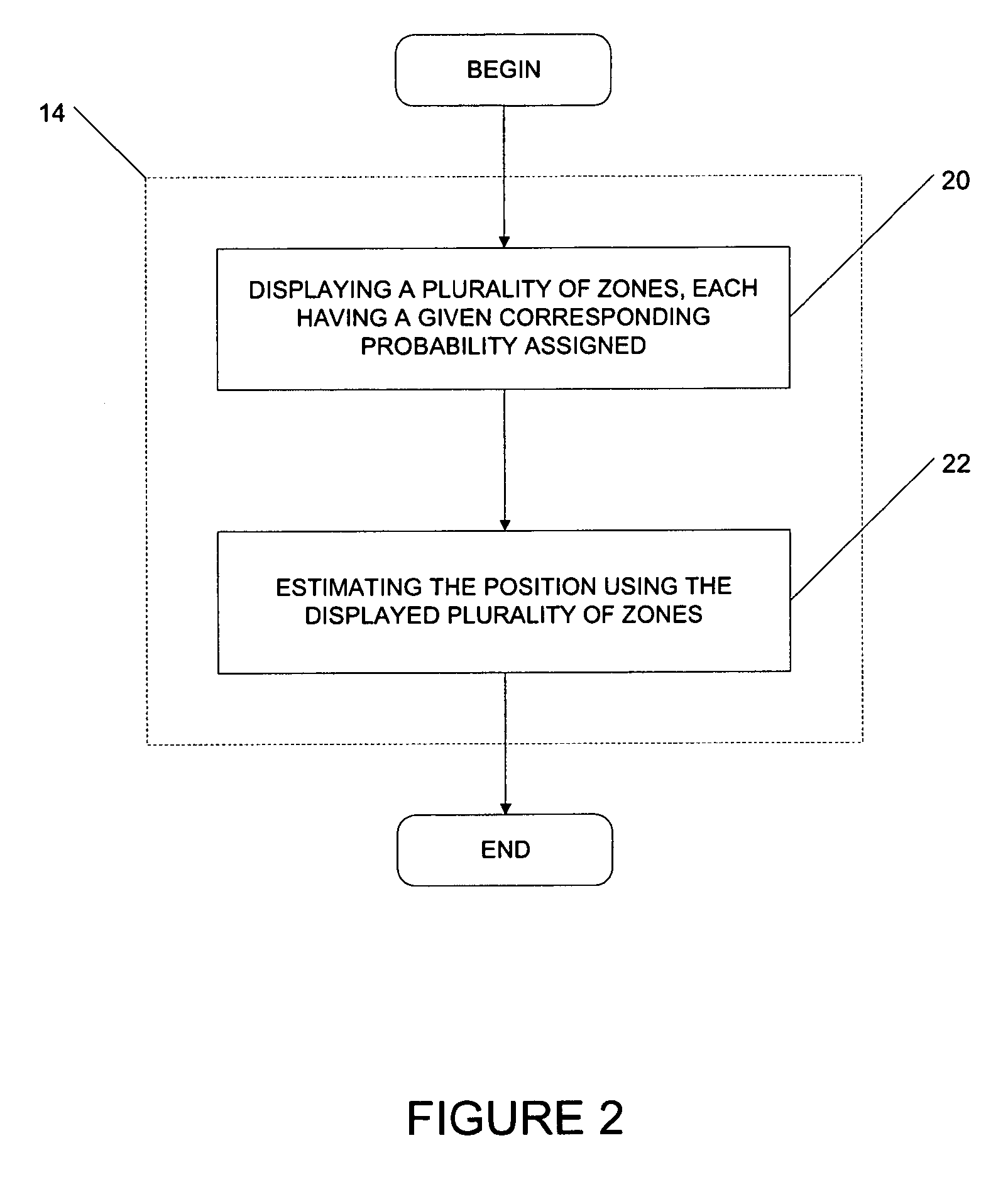Method and apparatus for performing a sensor fusion to provide a position of a target-of-interest
a sensor and target technology, applied in the field of identifying/tracking a target of interest, can solve the problems of no definitive way to distinguish, no way to discrimina
- Summary
- Abstract
- Description
- Claims
- Application Information
AI Technical Summary
Benefits of technology
Problems solved by technology
Method used
Image
Examples
Embodiment Construction
[0030]Now referring to FIG. 1, there is shown an embodiment for estimating a position of a target of interest using a plurality of sensors.
[0031]According to step 10, for each sensor, a corresponding detection probability profile and a detection status are received. In one embodiment, the corresponding detection probability profile comprises a 3-dimensional distribution defining the sensor's possible detection envelope and a computed probability of detection of the target of interest corresponding to each region of the envelope.
[0032]It will be appreciated that a three-dimensional Detection-Probability Profile (DPP) is used for each sensor of the plurality of sensors and a time-based function that determines the change of this profile with time, if applicable.
[0033]For example, it is known to a skilled addressee that a vertical dipole radio antenna exhibits a roughly circular detection probability profile, with an inverse-square law governing the drop-off in detection probability wi...
PUM
 Login to View More
Login to View More Abstract
Description
Claims
Application Information
 Login to View More
Login to View More - R&D
- Intellectual Property
- Life Sciences
- Materials
- Tech Scout
- Unparalleled Data Quality
- Higher Quality Content
- 60% Fewer Hallucinations
Browse by: Latest US Patents, China's latest patents, Technical Efficacy Thesaurus, Application Domain, Technology Topic, Popular Technical Reports.
© 2025 PatSnap. All rights reserved.Legal|Privacy policy|Modern Slavery Act Transparency Statement|Sitemap|About US| Contact US: help@patsnap.com



